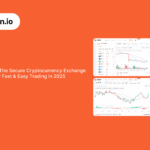Everyone’s watching Bitcoin this May. The price rides near all-time highs. Volatility just keeps showing up. Big names in crypto, Wall Street, and even global politics, all keep adding to the chaos or the excitement, depending on how you see it. But nobody out there can tell you for sure where Bitcoin will go next. The only honest way to answer is to lay out the situation, the signals, and the noise, just as it is.
Rollercoaster Mode is Active
Let’s start with what happened recently. Bitcoin powered through the end of April with an 11% jump, trading above $94,000, not far off from its all-time high. Liquidations kicked in hard and that was the reason of this move. Over $450 million in short positions got wiped since April 21. That’s a ton of bears scrambling to cover as the price shot up. Spot Bitcoin ETFs pulled in record net inflows; $3.1 billion in just five days.
At the same time, the perpetual futures funding rate turned sharply negative. That doesn’t happen often during bull runs. In plain terms, more traders were paying to go short, betting the Bitcoin Price would drop. But Bitcoin refused to play along, grinding higher and forcing sellers to capitulate.
So, you get a market where retail traders are getting spooked and betting against the Bitcoin prices in May, but big institutions keep scooping up more coins. Monthly Bitcoin futures contracts show a seven-week high in bullish premium, with more pros piling in. This split between retail vs. institutional just adds more fuel to the fire.
The Correlation Between Bitcoin and Stocks Is Breaking Down
A lot of traders used to treat Bitcoin as a high-beta tech stock. If the S&P 500 pumped, Bitcoin usually followed. If stocks dumped, Bitcoin crashed even harder. That correlation isn’t what it used to be. In April, the 30-day correlation between Bitcoin and the S&P 500 dropped to 29%. Just a month earlier, it hovered above 60%. What changed?
Simple answer: the factors driving Bitcoin are getting weirder. U.S. stock market momentum helped the price at first, especially after big companies posted strong Q1 earnings and U.S. trade policy eased a bit. But after that, Bitcoin started moving on its own.
Even gold, the so-called “digital gold” twin, can’t keep up. Gold ran to $3,500, then faded. Bitcoin just kept climbing without looking back. As more people accept Bitcoin as an independent asset, the rules start changing. Investors are looking at Bitcoin’s own supply/demand, leverage, and ETF flows more than what’s happening on Wall Street.
The Whales Are Hungry
You can’t ignore the big fish here. Michael Saylor and his crew at Strategy (MicroStrategy) keep making headlines, teasing new buys. The company holds over 538,000 Bitcoins, worth over $50 billion. Saylor hints at even bigger scoops. Some analysts on Twitter predict another $1.5 billion buy coming up.
But Saylor is not the only one who is accumulating. Whale wallets, holding at least $1 million in Bitcoin, started stacking harder this April. Glassnode’s data shows those wallets jumping from 124,000 to over 137,600 in just three weeks. Wallets holding more than 10,000 BTC? They’re also growing.
ETF inflows show the same story. Over $3 billion poured into spot Bitcoin ETFs during the last week of April. That marks the second-highest week for ETF flows since these products launched. Analysts say this is driving the Bitcoin Price recovery above $94,000 despite retail traders being hesitant.
The Power Law, Quant Models, and the Allure of $100K+
Let’s talk models. Analysts love models. Sina from 21st Capital brought up Bitcoin’s “power law” model, which tracks the network’s growth by Metcalfe’s Law (value grows with the square of the users). According to that, Bitcoin sits in a “transition” range. Accumulation happens now, and a breakout could lead to the “acceleration” zone.
Based on this quant model, the numbers everyone keeps whispering about: $106,000, $130,000, $163,000. Some even toss out $200,000 by the end of 2025. Apsk32, another pseudonymous analyst, compared this cycle to 2013, 2017, and 2021, laying the Bitcoin price movement on a power curve. The trend lines say the same thing: if the cycle repeats, Bitcoin could go way past $100,000 in the next year.
But those are just models. Markets can snap those lines in half if a black swan event hits. Or, sometimes, the cycle slows down for months and frustrates everyone.
Trump, Tariffs, and Global Noise
Bitcoin doesn’t live in a vacuum. In April, the U.S. President hinted at slashing or even removing federal income taxes if his new tariff plans go through. That’s a big swing for American consumers and investors. Less tax means more disposable income, which could mean more money flowing into risk assets like Bitcoin.
But these same tariffs could crank up inflation. The Federal Reserve already said Trump’s tariffs may impact the U.S. economy and push Bitcoin price higher. That keeps the whole “store of value” pitch for Bitcoin alive, especially for people worried about fiat losing value.
Meanwhile, China trade talks move back and forth. Markets keep waiting for solid action. Any deal, or the lack of one, could swing global risk sentiment and spill over into crypto.
Gold and Dollar Index
Here’s an angle a lot of traders watch. Gold and Bitcoin tend to move in waves. Gold leads, Bitcoin follows 100–150 days later, at least according to several analysts. Earlier this year, gold took the lead, then lost some steam while Bitcoin pumped.
The U.S. Dollar Index (DXY) just dropped to a three-year low in April. When DXY drops, it’s usually good news for Bitcoin and other risk assets. Venture Founder, another crypto analyst, says every time DXY heads for 90, Bitcoin runs up in the final stage of the bull market. He sees the same patterns again, calling for parabolic moves if the dollar stays weak.
Liquidity, Sentiment, and Weekend Whiplash
Sentiment turned positive as tariff fears faded, but there’s still a problem lurking: weekend liquidity. Crypto never sleeps, but the big money often takes a break. Weekends bring thinner order books, lower volume, and sometimes huge swings. Just look at what happened on April 6. Bitcoin fell below $75,000 on a Sunday, after the Fed’s inflation warning. It bounced back quickly, but traders who don’t plan for low liquidity get burned.
Bitfinex analysts say improved sentiment cushions the market but doesn’t erase structural risks. When open interest is high and market depth is low, surprise news can send Bitcoin price flying in either direction. RedStone’s Marcin Kazmierczak explains that sentiment alone can’t hold the Bitcoin price up if weekend volumes dry up.
Nansen’s Aurelie Barthere adds that most traders already priced in tariff worries. Now, markets are looking for new signals. These signals could be anything like breakouts, reversals, or macro shifts. She gives a 70% chance crypto finds a bottom and starts a new leg up by June, but the timeline depends on how these tariff negotiations play out.
Hyperbitcoinization and the $200 Trillion Dream
Adam Back from Blockstream calls out the “hyperbitcoinization” thesis. He argues that corporate treasuries holding Bitcoin, like MicroStrategy, or even new players in Japan, are just early movers. In his words, this is a $100–200 trillion trade, if Bitcoin becomes the world’s primary currency and replaces fiat. It’s a huge bet, but the logic sits on Bitcoin’s fixed supply and relentless price appreciation over each four-year cycle.
Not everyone agrees that hyperbitcoinization will actually happen, but the fact that institutional treasuries are stacking Bitcoin now does change the game. It pushes supply out of circulation, adds Bitcoin price support, and draws more attention from other big players.
The Battle for $100,000 and the Zone of Uncertainty
Let’s break down the current technical setup. Bulls have momentum. Bitcoin keeps bouncing off support levels and smashing through resistance. But $100,000 is a psychological line, and everyone knows it. Some analysts feel that Bitcoin may take a breather after so many liquidations. On the contrary, others expect more fireworks as institutional flows hit the market.
Funding rates and open interest keep showing mixed signals. Retail traders often short into strength, and when they’re wrong, forced liquidations fuel even bigger moves up. But if too many longs pile on, the opposite can happen. A quick price crash can result as stops get triggered.
Quant models say the rally could push toward $130,000, then $163,000, maybe even $200,000, if the power law plays out. On the flip side, weekend illiquidity or macro shocks could drive a quick sell-off, just as fast as the recent rallies.
Macro and Geopolitical X-Factors
Every trader now pays attention to the news cycle. A tweet from Trump about tariffs, a sudden Fed rate shift, or a China deal can all shake the market. Inflation fears, a falling dollar, and the idea of “risk on” sentiment coming back to stocks. All these elements feed into Bitcoin’s volatility.
No one out there can guarantee that May brings a new all-time high or a fresh correction. But the setup remains packed with catalysts: institutional demand, ETF flows, macro drama, and technical trends. The one constant? Volatility. Anyone in crypto long enough knows it never disappears.
So, Where Will Bitcoin Go in May?
Let’s be honest. Nobody can drop a pin on where Bitcoin will go this month. Bulls have the upper hand for now, with big money stacking and new models suggesting a climb toward $100K and beyond. The technicals and quant models point toward higher targets if momentum keeps rolling. But the market-structure stays fragile, especially on weekends or during big macro headlines.
But the regulatory clouds are constantly shitting. On top of that, institutions keep buying, and retail keeps doubting. And when you throw in global politics and the ever-present risk of a black swan, most of the experts are expecting some turbulence ahead.
Every move this May will write a new chapter for Bitcoin. Keep your eyes open, stay nimble, and watch the signals. Bitcoin always finds a way to surprise, sometimes with a bang, sometimes with a whimper. So stay aware, trade responsibly on a reliable platform like Visiion.io and keep growing.
The information shared above is for educational purposes only. Investment in cryptos carries risks, just like investment in traditional markets. We strongly recommend that readers consult with their financial advisors before investing. Visiion.io does not recommend or promote any particular crypto asset. The assets mentioned in the above article are for education purposes only.









